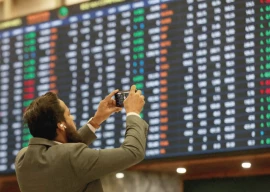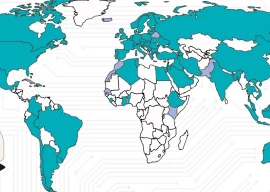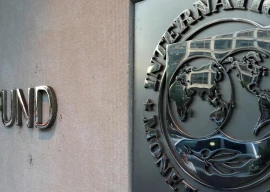
In line with market expectations, the State Bank of Pakistan (SBP) on Saturday kept the policy rate unchanged at 10% – a decision based on what the bank said were “stable macroeconomic conditions” after July.
The policy rate – which is announced every two months – is the interest rate at which commercial banks borrow from the central bank’s discount window. The central bank uses this tool to control inflation by changing the level of money supply in the economy.
According to a statement issued by the SBP, stable macroeconomic conditions were most visible in the headline inflation that dropped to 7% on a year-on-year basis in August, which is the lowest level since June 2013.

The SBP expects growth in real economic activity to continue in 2014-15, with the shrinking budget deficit, contained government borrowings and an improved debt profile.
Speaking to The Express Tribune, Standard Capital Securities Equity Research Analyst Rajesh Kumar Maheshwari said the decision to keep the policy rate on hold would not have any significant impact on the market. However, it would be largely positive for the banking sector, he added.
According to the SBP, the declining inflation was broad-based since both measures of core inflation – non-food non-energy and trimmed mean – also decelerated year-on-year to 7.8% and 7.14% in August respectively compared to 8.7% and 7.9% in June.
Noting that the future path of inflation matters more for the monetary policy decision, the SBP said the current outlook of around 8% average CPI inflation for 2014-15 might change adversely if electricity subsidy was cut and gas infrastructure development cess was levied.
It noted that real economic activity started to show signs of revival in 2013-14 after recording a low growth since 2008. “Continuation of the current growth momentum primarily hinges on agriculture production,” it said.
“This is because large-scale manufacturing (LSM) growth might remain constrained due to continued energy shortages, reduced production capacity of independent power plants, low supply of gas to fertiliser plants, lower domestic and international prices in the sugar sector and higher inventories and slower export growth prospects in the food and textile sectors, respectively.”
The SBP is of the view that trade gap is going to dominate the composition of external current account deficit, even with a healthy growth in worker remittances. Declining private capital inflows, foreign direct investment in particular, would present continued challenges in managing the balance of payments position.
“In this regard, realisation of expected privatisation proceeds and issuance of dollar-denominated eurobond and sukuks would be important.”
The SBP also noted that the ongoing political impasse, delay in finalisation of the fourth IMF review and heavy rains and floods threatened the nascent recovery in economic activity.
The first two would weigh more on private capital inflows, the SBP said, adding floods could potentially disrupt the output and supply chain of perishable food items, which challenges an otherwise benign inflationary outlook.
Besides having implications for economic growth, floods could also create macroeconomic imbalances by putting pressure on fiscal and external sectors, the SBP said. “Moreover, supply of loanable funds in the credit to private-sector market may also be adversely affected, at least initially.”
Published in The Express Tribune, September 21st, 2014.
Like Business on Facebook, follow @TribuneBiz on Twitter to stay informed and join in the conversation.































COMMENTS
Comments are moderated and generally will be posted if they are on-topic and not abusive.
For more information, please see our Comments FAQ